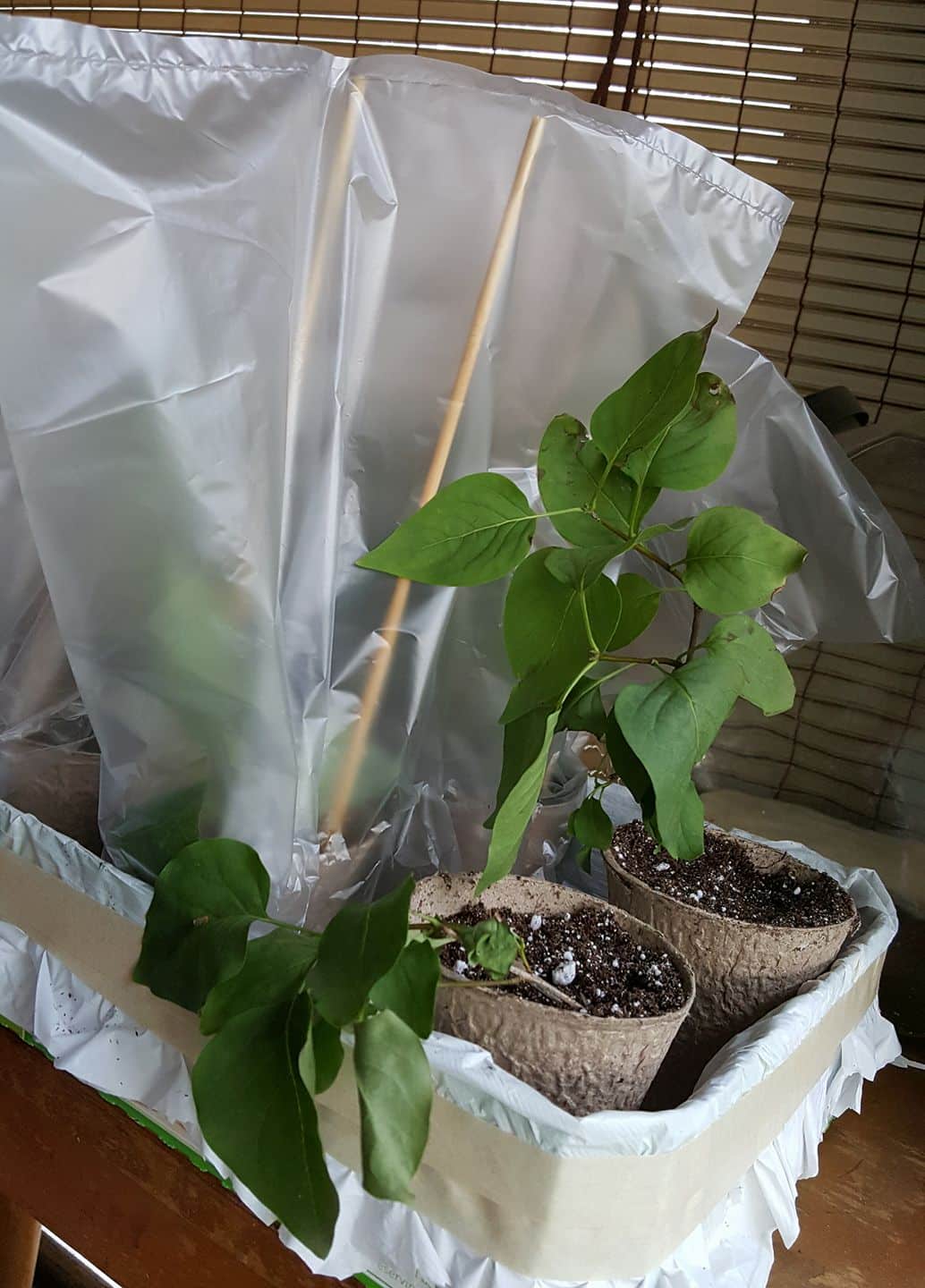Do you know propagating Lilacs from shoots of mother plants ensures genetically similar baby plantlets? But to make this possible, you must mark your calendars first!
Shoots are often known as suckers and grow attached to the base of the Liliac plant when the mother plant becomes older.
So, if your Lilac plant has growing shoots below them, read this entire article to know the best method and timing to grow new Lilacs from them successfully.
Table of Contents Show
When To Propagate Lilac Shoots?
You can propagate Lilac shoots straight into the ground or on the pot during its active growing season.
As those suckers or shoots already contain roots, it’s the easiest and most successful way of propagation.

Meanwhile, it’s not the only propagation method, as you can also propagate your Lilacs from stem cuttings or air layering.
Under the right conditions, you can see the roots on the cutting within 1-2 months.
How To Propagate Lilacs From Shoots?
The hardest part during shoot propagation is to separate the sucker from the mother plant. After you separate it, you will get a similar new plant.
Use the sharp shovel to dig up single or multiple suckers and soak them in water for hours.
If the shoots contain a mass of soil or rootballs, plant directly instead of soaking them.
Propagating Lilacs Shoots In A Pot
To propagate Lilacs shoots on a container, choose a Terracotta pot with enough drainage holes and fill half with a well-draining potting mix.
- Place the Sucker and fill the remaining half of the pot with soil or potting mix.
- Keep the soil moist but do not avoid waterlogging to prevent root rot.
- Add some extra soil after the first watering as the air pockets get filled in the soil.
- Allow the sucker to settle for one to 2 weeks before transplanting it to the garden.
Propagating Lilacs Shoots Straight Into The Ground
The new suckers get proper growing conditions in a container to settle as the roots get stressed after separation.
However, you can grow them directly on the ground after separating them from the mother plant, ensuring shoots have a good root system.
- Separate the shoots by digging 6 inches far from the roots to prevent root damage to the mother plant.
- Select the garden area with full sun and porous and nutrient soil.
- Dig and loosen the soil 2-3 inches deep to plant the newly separated sucker.
- Cultivate the Lilacs shoots in the trench, ensuring the newly sprouted leaves.
- Water the newly planted sucker every 4-5 days or whenever the soil feels dry.
How to Care For Your Newly Propagated Lilacs Shoots?
Although propagation via shoots is the easiest and most successful way, you have to give it some extra care after propagating these suckers.
With proper care, this incredible purple flowering shrub can grow up to 8-12 feet.
- Water your newly propagated Lilac shoots whenever the soil feels 1-2 inches dry.
- Provide the shoots with 6-8 hours of full sun daily.
- In case of unavailability of sun, provide 10-12 hours of artificial light.
- As the newly propagated suckers are sensitive, maintain a temperature of about 75° F.
- Lilacs can grow well in humid environments, so maintain 50-60% humidity or use a humidifier.
- Newly propagated suckers don’t need fertilizers, but you must provide them with balanced liquid fertilizer annually after the second year of growth.
From Editorial Team
Don’t Mistake Suckers For Lower Branches!
Sometimes, lower-lying Lilac branches may puzzle you with shoots as they look similar if the branch gets covered in debris.
The shoots are hard to remove and grow from the soil, unlike branches growing on the plant.
